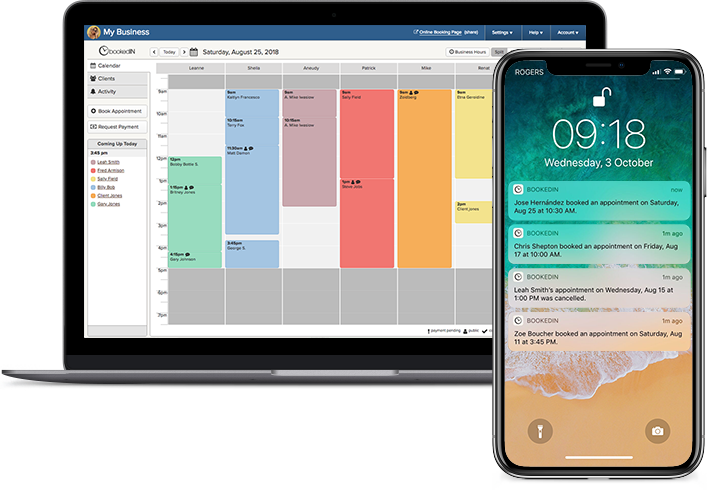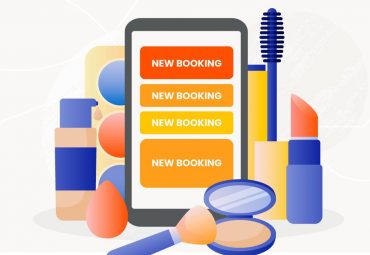Bewildered by Business Growth? Here’s How to Find Balance
When you started your business, you were probably thrilled the moment your first client walked in the door. For most, that’s when all of the groundwork you painstakingly laid out over months or even years starts to feel like it’s paying off.
Flash forward, and you find yourself inundated with clients. You’re booked months or even years in advance, and you’re not sure if you should start to raise prices through the roof just to scare some people off.
Don’t go there just yet. We have a lot of suggestions to help you remember your roots and keep your balance when business is suddenly booming. Don’t worry – we’ve got you.
Remember your roots
When you’re growing at a rapid pace, you’re inevitably going to come across bottlenecks. The rest of this article will help you address those bottlenecks, but you won’t be able to implement all of the suggestions we bring up at once.
So, how do you decide what to focus on?
Go back to your mission statement. Think about why you started your business. For many people reading this, that answer is service. You wanted to find ways to make your clients’ lives better – you love people, and you want to make them happy.
Keep your mission in mind, whatever it is. Whenever you’re automating a process, or finding new suppliers, or hiring new staff, ask yourself, “is doing this the best way to serve my mission?” From there, it should be easy to prioritize spending.
Create a framework for scaling
The end goal for most service-oriented businesses is simple – you want to be able to take on more clients while maintaining the same level of service you had when you were smaller.
That’s trickier than it might seem at first blush. Take, for example, a tattoo parlor. As a sole practitioner, you have complete control over the quality of tattoos your clients get. As you start adding more artists to your parlor, you need to:
- Purchase more equipment.
- Find the right artists.
- Ensure they’re meeting your standards.
- Add them to your accounting/payroll system.
- Adjust your insurance.
- Promote your new artists.
- Coordinate your schedules.
That’s just off the top of my head – and it’s just the tip of the iceberg. While your end goal is to take on more clients with the same level of care, getting there looks a bit like this:
That’s why it’s essential to plan everything out before making a move. Any lever you pull in a business is going to create cascading effects. Plan out best, average, and worst-case scenarios. Determine all the steps you’ll need to take to implement a decision well in advance of actually making the decision – sometimes, the Goldberg machine is too complex, and you’ll need to take a simpler route.
Get help
When you find your business is growing too quickly, it’s possible you’ll need professional help.
*Though hopefully not this kind of help.
Fortunately, business growth usually means you’ll have some cash to spend – re-investing in your own business is the best way to keep your growth sustainable. There are two kinds of help you might look at: day-to-day help and strategic help.
Day-to-day help
Day-to-day help is the type we described when the tattoo parlor hired a second artist – in a similar vein, a barbershop could hire a second barber, a mental health clinic could hire a second therapist – you get the idea.
This type of help can also include people who can assist you with administrative tasks – secretaries, receptionists, and the like. For places that aren’t quite big enough to hire a full-time administrative assistant, virtual assistants can be a boon – they’re less expensive to hire, and can fulfill many daily tasks, from scheduling to sorting through your emails.
You can “hire” software, too – it’s often much cheaper than hiring a person. Better yet, it can free up time for you and your staff. What you do with that time is up to you – work, play, whatever makes you happy. Bookedin can save you hours – we have a great quote from tattoo artist Russell McCabe that makes our hearts warm
“This software has given me peace of mind by allowing me to spend more time where the work is truly needed instead of behind the keyboard manually entering each and every appointment… so wonderful! This booking software gave me almost ¹/3 of my time back and it also made scheduling for my client’s way easier! It’s exceeded my expectations ten fold!”
Comments like that are why we got in this business – helping people is what we love to do.
Strategic help
Rapid business growth can feel a bit like this:
As excited as you might be to “feed the beast”, so to speak, it can also be pretty scary. Having experts on your team who have already dealt with giant carnivorous plants – I mean, rapid business growth – can be a huge asset.
Hiring consultants with proven track records will help you navigate the mystifying quagmire of legal, economic, and social ramifications of increasing your capacity to take on new clients. Accounting firms can help you get the most out of tax incentives. A legal team can help you avoid lawsuits. You won’t need to pay these professionals 40 hours a week, but creating those connections and meeting with them regularly can help you chart a course for your business.
Automate the repetitive stuff
We’re way past the days when Luddites would destroy textile factories because of automation – we’re nearing the stage of meta-automation, where automations automate automating (say that three times fast).
Every business has automated to a certain extent, even if it’s just an automated voice messaging system or Google automatically sorting through your emails.
What to automate
When looking for automations to help smooth out business growth, it’s important to keep certain principles in mind:
You can’t automate everything. Creativity, face-to-face interaction, things that require a lot of manual dexterity, and a whole host of other human-centric activities can’t be automated. Perhaps they will be one day, but not today.
There are no robots that account for fashion trends and your personal style and comfort when helping you choose a hairstyle. A computer with Microsoft Sam’s voice will never replace face-to-face interaction with a therapist. Some things are meant to be done by humans.
What you can automate are repetitive activities that are prone to human error:
Factory work is a great example of this type of automation. For service-based businesses, automation usually happens on the digital side of things – you can automate appointment scheduling, accounting, bill payments, and a bunch of other activities that basically come down to number crunching and data management.
Basically, automation is great for everything that happens before and after an appointment. Use it to manage all the things that would take time away from the most important thing – building a relationship between you and your clients.
Work-life balance
We’ve talked a lot about how to keep business growth sustainable so far, but there’s something important we’ve yet to discuss – how to keep business growth sustainable for you.
When you’re growing faster than dust grows on a Blu-Ray player, you might find you have less time. Less time to yourself, less time for your family, less time to do all the things you love. Your work-life balance might be getting out of whack.
That’s where automation comes in.
Chances are, you’re doing a lot of things manually that you don’t have to. Are you looking through messages clients sent you at 3 in the morning? Get a chatbot to answer frequently asked questions. Are you manually typing expenditures into spreadsheets? Get bookkeeping software. Are you trying to schedule your hundreds of new clients, and find yourself unable to keep up with all the appointments you have booked? Get an automated appointment scheduling software like Bookedin.
Remember, you have business goals, and you have personal goals. Reaching your business goals is a personal goal, though it’s one that’s shared with other members of your team. Shirking all of your other personal goals to achieve business goals, though? That can hurt. A lot. Always remember to leave time for yourself. Encourage your team to do the same.
Focus on customer retention
There are a few reasons you should focus on customer retention. You may have heard that it costs 5 times as much to acquire a new client than it does to retain a client you already have.
Our focus on retention goes deeper than that, though!
Think about it like this: do you really want to lose the people who made your business boom in the first place? These are the people who had faith in your business. They came back again and again. They told their friends about you! When you lose these people, it’s likely you’ve lost sight of your initial mission.
Create customer personas
You can use customer lists and data to create customer personas – idealized versions of the clients you want the most. Focus your energy on those clients. Try to make room for them.
Obviously, when you’re booked up 2 years in advance and constantly getting notices on Instagram from new clients who want to book with you (Bookedin can help with this), you might not have room for all of your old clients. Try to send them something personal – let them know you still care. Focus, in particular, on personalizing messages to the people who fall into the customer personas you’ve created – you want them to come back! They’re probably your most loyal clients, and they probably net you the best ROI.
Be flexible
This is the last piece of advice, and – bonus – it works really well on a metaphorical basis. In yoga, you learn that balance and flexibility are intimately linked.
You need stability – you’ll find that by keeping your mission statement at your core. From that stability, you need flexibility – the ability to adapt and change to different poses. That’s balance – the ability to stay grounded while moving.
In business, that means being ready to roll with the punches. It means accepting negative experiences as opportunities for growth, and viewing positive experiences in the same light. It means having an abundance mindset.
Most industries change rapidly as new technologies and new trends arise. As long as those technologies and trends don’t run contrary to your mission, incorporate them. Adapt. Growth is change, and to flow with change, you need mental flexibility.
In practical terms, that means constantly tweaking your business plans. It means talking with your clients and your team, and collecting new ideas. It means not holding onto anything too tightly if it’s not a matter of absolute moral conviction. It means being excited to try new things.
Business growth doesn’t just mean more money. Your team will grow with your business – so will your clients. So will you. By keeping all of this in mind, and implementing some of the tactics we’ve just gone over, your business will grow in ways you never expected. Get excited!
















